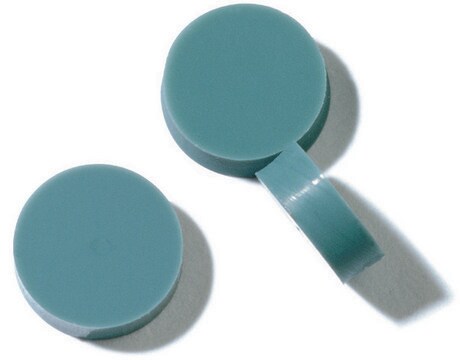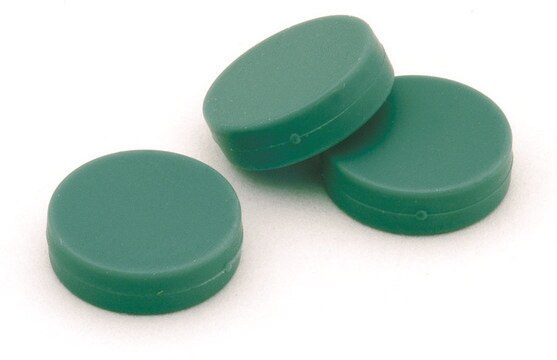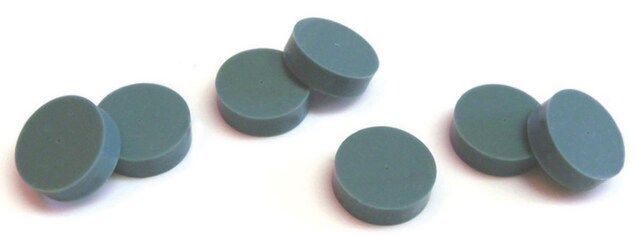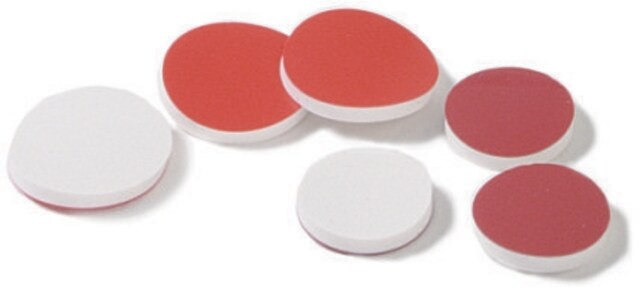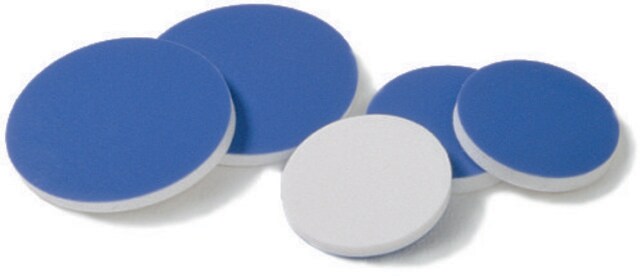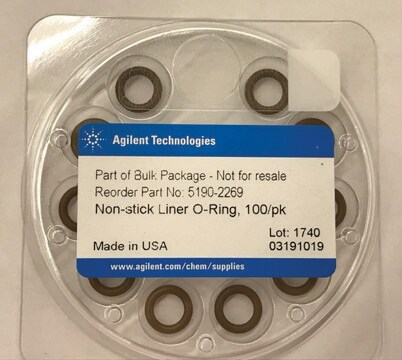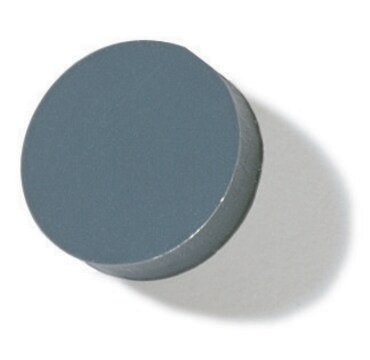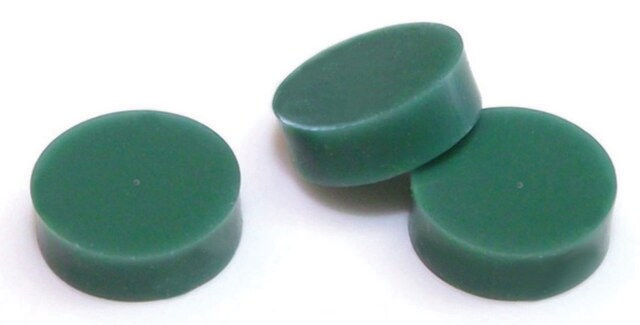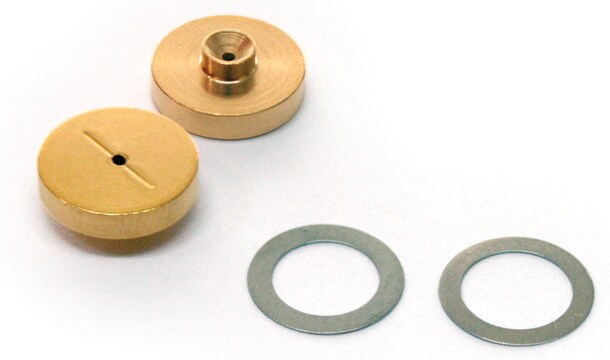28336-U
Molded Thermogreen® LB-2 Septa, with injection hole
diam. 11 mm, pkg of 50 ea
Synonym(s):
TM=["Thermogreen"] LB-2 Septa (11 mm)
About This Item
Recommended Products
packaging
pkg of 50 ea
diam.
11 mm
Looking for similar products? Visit Product Comparison Guide
Related Categories
General description
Molded Thermogreen LB-2 septa are manufactured from high quality, low bleed material using the same exclusive LB-2 rubber formulation that chromatographers are accustomed to using. The difference is that molded septa, unlike traditional die-cut septa, offer easier installation and better sealing inside the injection port. This is because our liquid injection molding process ensures that every septum conforms to the same shape with crisp, clean sides. This is an improvement over a die-cutting process where septa can become cupped and/or distorted when the cutting surface becomes dull.
The useable inlet temperature range of 100-350 °C is adequate for most GC applications. Don′t be fooled by other septa that advertise a maximum temperature of 400 °C! Tto make septa with high thermal limits, they must be made stiffer, resulting in septa that are harder to pierce and easier to core! Our molded Thermogreen LB-2 septa offer the perfect combination of low bleed, thermal stability, and easy puncturability.
- Rubber formulation exclusive to Supelco
- Strict tolerances (diameter, thickness, injection hole) due to constant dimension of the mold itself
- Ultra low bleed over a wide range of inlet temperatures (100 °C to 350 °C)
- No foreign substances/powders (which could contaminate the inlet) are used during manufacturing
- Fully tested for bleed and contamination
- Already conditioned, ready to use
- Ideal for use with low bleed GC-MS columns
Other Notes
- Minimal coring leading to long life
- Less septum fragments that contaminate the inlet liner
Legal Information
Storage Class Code
11 - Combustible Solids
WGK
WGK 3
Flash Point(F)
Not applicable
Flash Point(C)
Not applicable
Choose from one of the most recent versions:
Certificates of Analysis (COA)
Sorry, we don't have COAs for this product available online at this time.
If you need assistance, please contact Customer Support.
Already Own This Product?
Find documentation for the products that you have recently purchased in the Document Library.
Customers Also Viewed
Protocols
High-resolution profiling of terpenes and terpenoids to identify fragrance compounds and distinguish hops and cannabis varieties using SPME-GC/MS.
Terpenes are present in essential oils derived from plants and often impart characteristic aromas to the plant or its oil. The SPME is a convenient, efficient, and easy to automate sample preparation technology for analyzing the terpene/terpenoid profile of these plant materials.
The use of solid phase microextraction (SPME) allowed for the straightforward, fast, sensitive, and accurate GC/MS determination of the residual solvent content of spiked and unspiked samples of hemp extract.
Bisphenol A (BPA) is suspected to be an endocrine disruptor. Regulations on specific migration limits (SML) from food contact materials are getting tighter (EU 2018/213) requiring more sensitive determinations. An overcoated SPME fiber provides the durability necessary for direct immersion into foods such as canned soup and pumpkin, allowing for low level analysis of BPA via SPME-GC-MS/MS.
Related Content
GC/MS/MS Analysis of Bisphenol A (BPA) in a Fruit Flavored Energy Drink on the SLB-PAHms Column After SPME Using an Overcoated SPME Fiber
Our team of scientists has experience in all areas of research including Life Science, Material Science, Chemical Synthesis, Chromatography, Analytical and many others.
Contact Technical Service